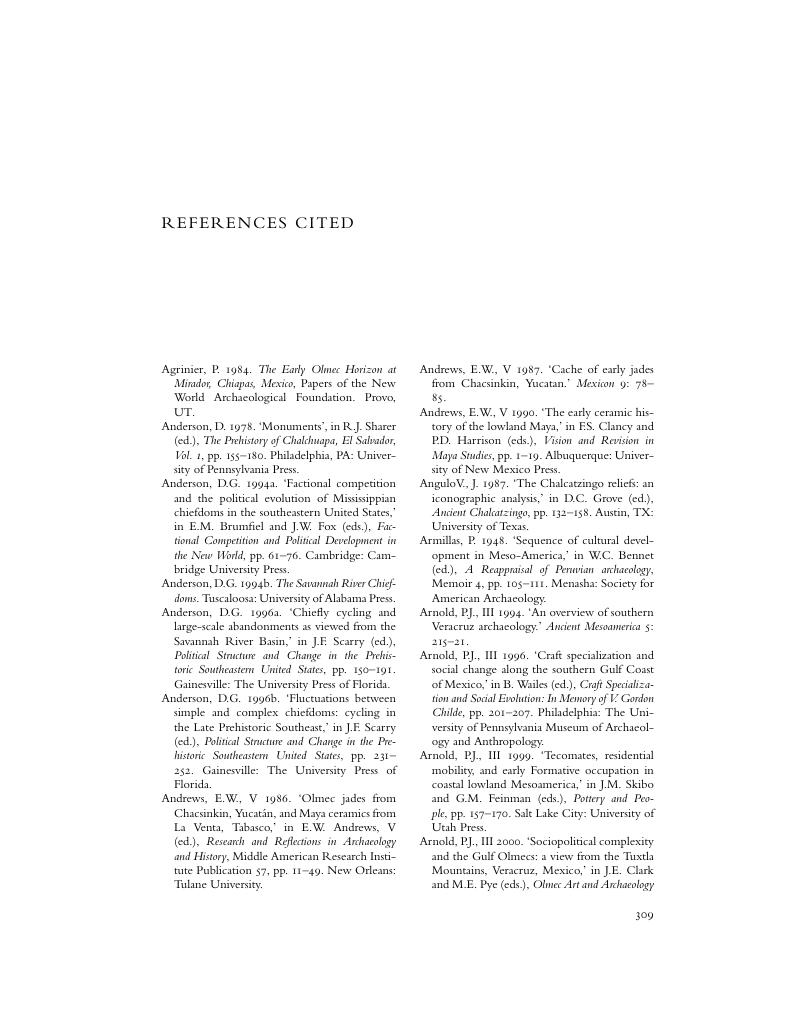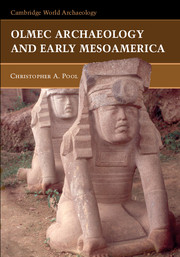Book contents
- Frontmatter
- Contents
- List of Illustrations
- List of Tables
- Acknowledgments
- 1 Introduction
- 2 “Great Stone Faces of the Mexican Jungle”
- 3 Olman, the Land of the Olmecs
- 4 Olmec Beginnings
- 5 Olmec Transformations: The Middle Formative Period
- 6 The Olmecs and Mesoamerica
- 7 Collapse, Continuity, and Evolution: Late Formative Olman
- 8 The Olmecs and Their Legacy
- Notes
- References Cited
- Index
- References
References Cited
Published online by Cambridge University Press: 05 June 2012
- Frontmatter
- Contents
- List of Illustrations
- List of Tables
- Acknowledgments
- 1 Introduction
- 2 “Great Stone Faces of the Mexican Jungle”
- 3 Olman, the Land of the Olmecs
- 4 Olmec Beginnings
- 5 Olmec Transformations: The Middle Formative Period
- 6 The Olmecs and Mesoamerica
- 7 Collapse, Continuity, and Evolution: Late Formative Olman
- 8 The Olmecs and Their Legacy
- Notes
- References Cited
- Index
- References
Summary

- Type
- Chapter
- Information
- Olmec Archaeology and Early Mesoamerica , pp. 309 - 336Publisher: Cambridge University PressPrint publication year: 2007

